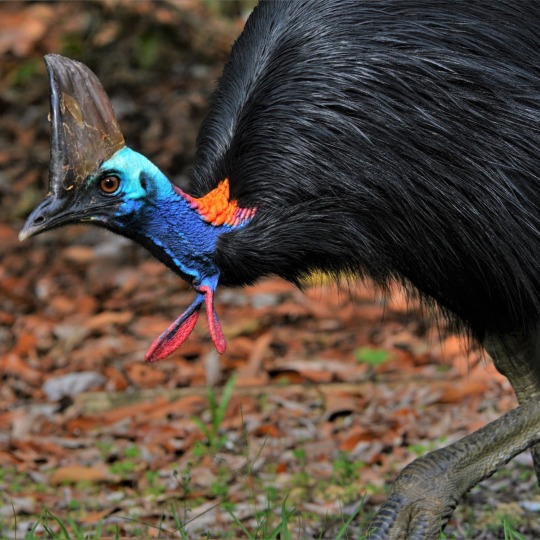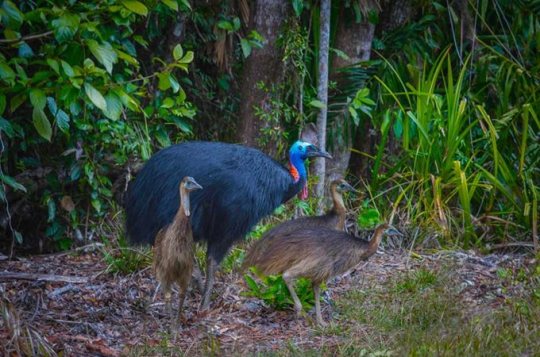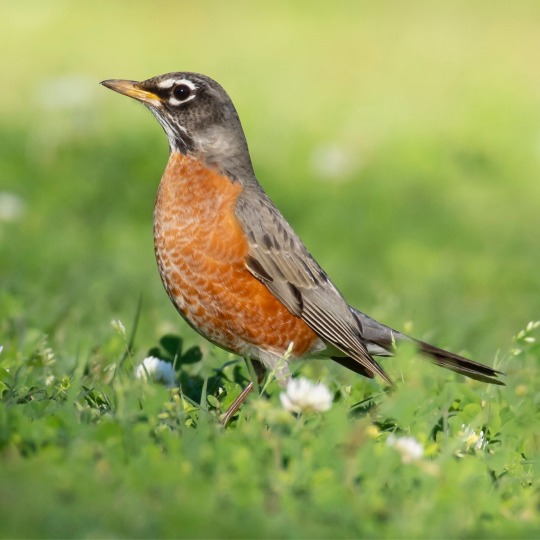#Southern Cassowary
Explore tagged Tumblr posts
Text

photo source
#lets try this again.#poll#bird#southern cassowary#casuariiformes#casuariidae#casuarius#casuarius casuarius#asia#eurasia#australia#oceania#ARGH I FORGOR. THE QUESTION MARK
385 notes
·
View notes
Text


Remember to read about the contestants before voting!
Superb Fairy Wren
The Superb Fairy Wren is a little guy local to southern Australia! The females look much less fancy, but are still adorable. They even have a cute little dance they do to attract mates, using their beautiful feathers in a full dissolution. There are actually many different kinds of fairy wrens. Learn More!
Southern Cassowary
Everyone has heard tales of the Southern Cassowary. With long, gut-wrenching claws and an aggressive and territorial demeanor, the Cassowary is a very scary bird. However, their diet mainly consists of fallen fruit, and there actually are only two reported human deaths caused by cassowaries (one of these humans was trying to beat it to death with a stick). They also mainly attack or charge because of expecting food from humans after being fed by them for a while. Learn More!
(Superb Fairy Wren photo by Michael Livingston)
(Southern Cassowary photo by David Hollie)
1K notes
·
View notes
Text




Southern Cassowary Casuarius casuarius
11/11/2023 San Diego Zoo Safari Park, California
truly insane set of photos!!!!!!! how does it look like that!!!!!!!
#was speechless irl when I got these#southern cassowary#cassowary#cassowaries#bird#birds#captive animal#san diego zoo#san diego zoo safari park#zoo animals#zoo#zoo photography#photography#photographers on tumblr#original photography#nature photography#my photos
99 notes
·
View notes
Photo

Southern Cassowary (Casuarius casuarius)
© Mark and Angela McCaffrey
94 notes
·
View notes
Text

Drew some birds (April 27, 2024) - closeups below
Literally just scribbled these with my fine tip markers of twelve colours. And it was really fun, and I'm gonna do this again. But I don't really know what birds to draw next, so feel free to suggest some!





#red-breasted sapsucker#steller's jay#long-eared owl#keel-billed toucan#laughing kookaburra#american crow#roseate spoonbill#southern cassowary#rufous hummingbird#birds#my art#art#bird art#birblr#sapsucker#woodpecker#jay#corvids#owl#owls#toucan#kookaburra#crow#corvid#spoonbill#cassowary#hummingbird
138 notes
·
View notes
Text

Cassowary for birbfest !
Stickers and prints available on my redbubble !
#bird#birds#my post#my posts#art#digital art#my art#my artworks#my artwork#cassowary#cassowaries#southern cassowary#bird art#birds art#bird artwork
34 notes
·
View notes
Text

Rainforest colours #1, Babinda.
Wild Cassowary.
On my travels
#original photographers#nature photography#wildlife photography#bird photography#Southern Cassowary#rainforest colours#Babinda#on my travels
43 notes
·
View notes
Text
For #WorldCassowaryDay :

Jean-Baptiste Oudry (France, 1686–1755)
Cassowary, 1745
oil on canvas, H 63.7 in (161.9 cm) x W 50.1 in (127.4 cm)
Staatliches Museum Schwerin
🆔 Southern Cassowary (Casuarius casuarius), aka the Double-Wattled Cassowary
#animals in art#animal holiday#birds in art#bird#painting#oil painting#cassowary#Southern Cassowary#European art#French art#natural history art#wildlife art#18th century art#Jean-Baptiste Oudry#Staatliches Museum Schwerin#World Cassowary Day#Australian animals
35 notes
·
View notes
Text

Casso-unwary
We were driving in Tully Gorge national park and pulled off the road. To our surprise, this young southern cassowary was standing there. He was as curious about us as we were about him – while maintaining a safe distance! I love the tilt of his head and the way his casque looks like a cap, which I have emphasised with the way I have cropped the photo
by Gail Yager
2023 BirdLife Australia Photography Awards
#gail yager#photographer#casso-unwary#southern cassowary#tully gorge national park#australia#bird photography#nature#queensland
36 notes
·
View notes
Text







Cassowary - Big bird in trouble by Christian Ziegler
The Southern Cassowary, one of the largest living birds on earth, are found in the tropical rainforests of northern Queensland and Papua New Guinea. Due to habitat loss, feral dogs and pigs, as well as road kill, only an estimated 1500 individuals remain in Queensland. Cassowaries are crucial seed dispersers in these forests and dozens of tree species depend on their services. This photo essay explores the life cycle of this elusive species as well as the challenges it faces.
9 notes
·
View notes
Note
Your bird drawings are so pleasing to the eye and beautiful. My friend said you should draw a cassowary, and I'll suggest a rock ptarmigan
thank you so much, that’s really nice!! :> here are your birds, i tried experimenting with a new style, i hope you like it!


#cassowary#southern cassowary#rock ptarmigan#birds#digital art#plush pigeon draws#pigeon answers questions
17 notes
·
View notes
Photo



Carve Out Some Time for the Cassowary
Famous for their bright colors and short tempers, cassowaries are a group of flightless birds in the genus Casuarius. There are three species: the Northern Cassowary (C. unappendiculatus) which is found in New Guinea; the Southern Cassowary (C. casuarius), native southern New Guinea and northern Australia; and the Dwarf Cassowary (C. bennetti), endemic to New Guinea and the surrounding islands. All three species prefer tropical forests, though they are known to venture into savannahs, wetlands, and suburban areas in search of food.
Cassowaries are mainly active at dawn and dusk, and spend the time in between in their nests-- large pads of vegetation built on the ground. They opportunistic omnivores; their primary source of food is fruit and fungi, but they will also eat insects, frogs, fish, birds, small mammals, and carrion when available. Much of the fruit they eat is swallowed whole, which makes cassowaries invaluable for spreading seeds throughout their range. Additionally, due to their large size, adult cassowaries have no natural predators, and will aggressively defend their young from predators like snakes, monitor lizards, birds of prey, and wild dogs. When startled this birds can run up to 50 kph (31 mph), or lash out with their powerful legs.
Members of the Casuarius genus are solitary, save for the reproductive season. This season runs from May to September, when fruit is most abundant. Males maintain and defend territories, and call to attract mates. These calls are extremely loud, and at one of the lowest frequencies of any known bird, at about 23 Hertz. When a female approaches, the male crouches and allows the female to inspect him. She may also chase him, typically into water where the two perform a ritualistic fight before she submits. After laying her eggs, the female will move on to another male’s territory.
The eggs are extremely large and bright green, and usually laid in clutches of four. The male alone tends these eggs, incubating them and maintaining the nest for 50-52 days. The chicks that emerge stay with him for an additional 8-9 months until they become independent. Individuals take up to three years to become fully mature, and the average lifespan of wild Casuarius is anywhere from 30 to 50 years.
Southern Cassowaries are the largest of the three species, at up to 1.8 m (5ft 11 in) tall and weighing 58 kg (130 lbs) on average. Females tend to be much larger than males, and the species is considered to be the largest in Asia and the 3rd largest in the world. The Dwarf Cassowary, as the name implies, is significantly smaller at only 1.5m (4ft 11in) tall and 26 kg (57 lbs) at maximum. Northern Cassowaries lie between the two extremes. While all three species have black bodies, the coloration of their heads and necks vary significantly. Both the Northern and Southern Cassowary species have wattles-- pouches of skin that dangle from the neck-- that can be red, gold, purple, or white, which contrasts sharply with their blue necks. The Dwarf Cassowary lacks a wattle, and has a darker blue neck. In addition, it has the smallest head crest, or casque,; the Southern Cassowary’s casque is blade-shaped, and larger than the Dwarf Cassowary’s. The Northern Cassowary’s casque is more flared, and the largest of the three species.
Conservation Status: The Dwarf and Northern Cassowary species are considered Near Threatened and Least Concern respectively by the IUCN, while the Southern Cassowary is classified as endangered. All three are threatened primarily by habitat loss.
If you like what I do, consider leaving a tip or buying me a ko-fi!
Photos
Steve Parish
Kevin Schafer
San Diego Zoo
#northern cassowary#southern cassowary#dwarf cassowary#cassowary#Casuariiformes#Casuariidae#paleognaths#birds#tropical forests#tropical forest birds#tropical rainforests#tropical rainforest birds#savannahs#savannah birds#wetlands#wetland birds#asia#southeast asia#Papua New Guinea#australia#oceania
179 notes
·
View notes
Text


Remember to read about the contestants before voting!
Southern Cassowary
Everyone has heard tales of the Southern Cassowary. With long, gut-wrenching claws and an aggressive and territorial demeanor, the Cassowary is a very scary bird. However, their diet mainly consists of fallen fruit, and there actually are only two reported human deaths caused by cassowaries (one of these humans was trying to beat it to death with a stick). They also mainly attack or charge because of expecting food from humans after being fed by them for a while. Learn More!
American Robin
Don’t be fooled by the American Robin, these guys are also little hunters. They don’t eat many fruits or berries, only eating them when necessary. Instead, they stalk and pounce on their prefered prey: earthworms. The common Robin behavior of running along the ground, stopping, and stretching out its head is the Robin hunting it’s next catch. They stop, look, and maybe even listen. They are mainly sight based predators, looking for movement of the earthworms. They are also possibly listening too, tilting their head to hear better. Learn More!
(Southern Cassowary photo by Luke Shelley) (American Robin photo by Marky Mutchler)
125 notes
·
View notes
Text

Southern Cassowary Casuarius casuarius
11/11/2023 San Diego Zoo Safari Park, California
#cassowary#southern cassowary#cassowaries#bird#birds#captive animal#san diego zoo#san diego zoo safari park#zoo animals#zoo#zoo photography#photography#photographers on tumblr#original photography#nature photography#my photos
31 notes
·
View notes
Photo

Southern Cassowary (Casuarius casuarius)
© Imogen Warren
101 notes
·
View notes
Text
Animal of the day for November 4: Southern Cassowary (Species Casuarius casuarius)

My favorite bird ♥️
Cassowaries are regarded as the most dangerous bird in the world, due to being the third largest bird in the world behind the two extant Ostrich species, and having an innermost toe claw that'd make a Velociraptor jealous.
While the Southern Cassowary is the most dangerous bird in the world, it generally prefers to avoid humans and is usually only aggressive while nesting.
Cassowaries are also unique in the fact that only the males care for offspring, while the females ditch their mates after laying eggs in favor of mating with as many males as possible.
#animal of the day#novemeber#november 4#southern cassowary#cassowary#flightless birds#birds#australia#new guinea#indonesia
2 notes
·
View notes